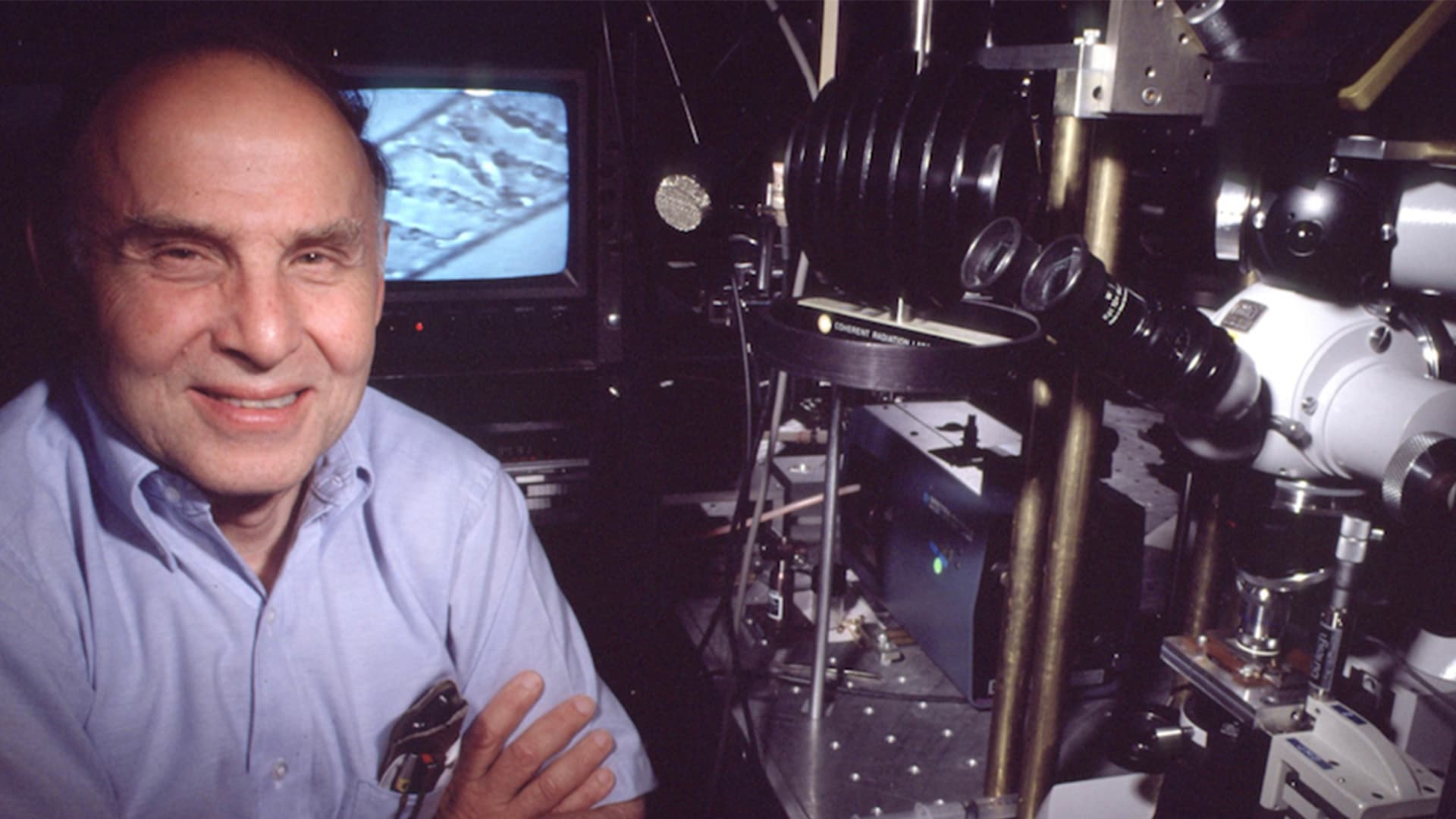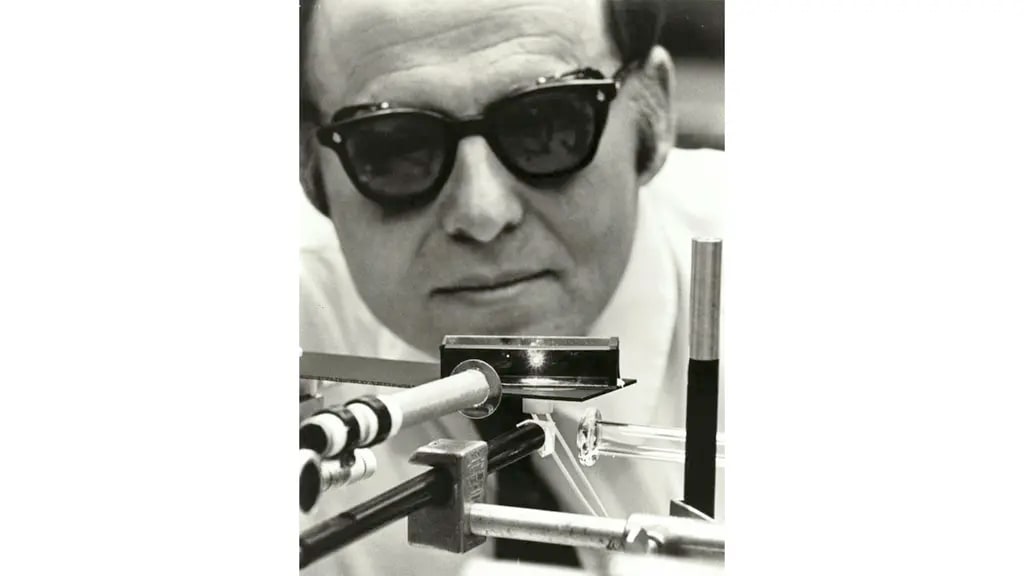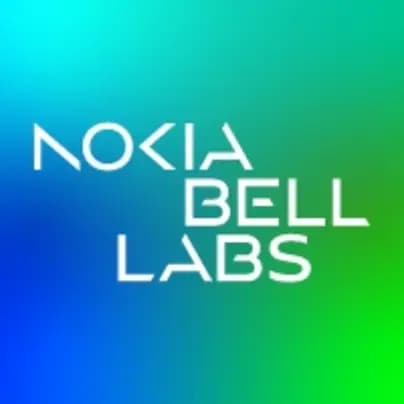Arthur Ashkin wins 2018 Nobel Prize in Physics

Arthur Ashkin, a former Bell Laboratories researcher, was awarded the 2018 Nobel Prize in Physics “for the optical tweezers and their application to biological systems” on October 2, 2018. Arthur Ashkin shares the prize with Gérard Mourou and Donna Strickland, “for their method of generating high-intensity, ultra-short optical pulses.” The Royal Swedish Academy of Sciences administers the Nobel Prize for Physics and said they were awarding this year’s winners “for groundbreaking inventions in the field of laser physics.”
This is the 9th Nobel Prize awarded to our researchers for their work at Bell Labs.
Arthur Ashkin was born on September 2, 1922 (age 96) in Brooklyn, New York. He received a B.A. in physics from Columbia College in 1947 and a Ph.D. in nuclear physics from Cornell University in 1952. Ashkin worked at the Columbia Radiation Lab from 1942 to 1945 while in the Army. In 1952, he joined AT&T Bell Laboratories and started working in the microwave field and then switched to laser research.
His research and published articles at that time pertained to nonlinear optics, optical fibers, parametric oscillators and parametric amplifiers nonlinear optics, and laser trapping. In the 1960’s, he was the co-discoverer of the photorefractive effect in the piezoelectric crystal. With colleagues, he made the first observation of continuous wave, laser harmonic generation, parametric amplification, discovered the photorefractive effect and initiated the field of nonlinear optics in optical fibers. Many consider Ashkin the father of the use of laser radiation pressure. His work in this area pioneered the optical trapping and manipulation of small dielectric particles using optical gradient forces.
Arthur Ashkin invented optical tweezers that grab particles, atoms, viruses and other living cells with their laser beam fingers. As is always the case at Bell Labs, the breakthrough came as a byproduct of research in the fundamentals of communications – in this case, optical communications research into non-linear optical systems. Out of his work on advanced laser optics came the ability to use optical ‘pressure’ from high-powered lasers to control microscopic particles. A major breakthrough came in 1987, when Ashkin used optical tweezers to capture living bacteria without harming them. The optical tweezers he pioneered are now widely used to investigate the machinery of life.

Ashkin’s work in optical trapping lead the way to the atomic trapping research for which Steven Chu received the Nobel Prize in 1997.
The background of his work is based upon fundamental laser physics and non-linearities in optical fibers. Through studying the impact of non-linearities and the Kerr effect in materials (such as glass fibers) Ashkin appreciated the ability to self-focus and self-trap light in a non-linear material. This ability to apply radiation pressure then led to the ability to manipulate macroscopic particles for which Ashkin is recognized today. As is the case in all of the Nobel Prizes awarded to Bell Labs scientists, the breakthrough came as a byproduct of research in the fundamentals of communication – in this case, optical communication.
Ashkin retired from Bell Labs in 1992, but he is still considered an active part of the Bell Labs family as he comes often to Coffee Hours and Picnics at the Crawford Hill Laboratory in Holmdel, New Jersey. He is the author of Optical Trapping and Manipulation of Neutral Particles Using Lasers (1997, Ashkin), and holds 47 patents. Awards and honors recognizing his scientific contributions include election to the National Academy of Engineering in 1984 and the National Academy of Sciences in 1996, OSA’s Ives Medal/ Quinn award and Townes award, the IEEE Laser and Electro-Optic Society’s Quantum Electronics award, the APS Joseph F. Keithley award for advances in measurement science in 2003, and the Rank Prize in opto-electronics. Ashkin attained the rating of fellow in the Optical Society of America (OSA), the American Physical Society (APS), and the Institute of Electrical and Electronics Engineers (IEEE).
We congratulate Arthur Ashkin, our former colleague, on this glorious news.
p.s. Our president, Marcus Weldon, celebrates Arthur’s recognition while reflecting on our mission and whether it has changed over the years.
